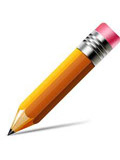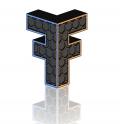Results 1 to 10 of 14
-
05-14-2014, 06:42 AM #1
KAST 3d Printer - 12 Times Faster than Any Other 3D Printers - Coming soon!
Ok, I am not sure how much to believe of what this company (KAST) is claiming. However, they claim to be the fastest prosumer 3D printer in the world, and say that it can print 12 times faster than traditional 3D printers. It uses an SLA-like technology which they say is patent pending. They plan to launch on Kickstarter soon for $1,790. I will believe it when I see it. More details at: http://3dprint.com/3721/kast-3d-printer/
What do you think? Is this real or not? Is it possible?

-
05-14-2014, 11:57 AM #2Staff Engineer

- Join Date
- Dec 2013
- Location
- Georgia
- Posts
- 934
I could think of a few things they could have incorporated into this to make it faster than normal SLA. They seem to be using DLP rather than laser for the projection, which trades resolution for speed, also there could be some trickery with the resin tub to keep cured resin adhesion from being a problem, but all the ways I can think of would also lower the detail of the final print. They mention that they're using a specialized resin for this, which is probably where most of the speed increase lies. It also means the resin is likely to be be very expensive.
Also, of course, they could be cherry picking the slowest printer they could find to act as their "traditional" benchmark.
I look forward to seeing it in action though to see if I'm wrong about that last part.
-
10-02-2014, 05:26 AM #3
Seems the project is close to be Kick started:http://www.3ders.org/articles/201410...ckstarter.html
They appear to be using a LCD panel, they claim a build speed of 5 inches or 127 mm per hour, which is quite fast indeed if we compare to the 2.7 in/h of the Titan1, Kickstarted this year, claiming to be the fastest.
I'm interested to know more about the pros and con's of using a LCD screen, seems to me that it would be easier (cheaper ?) to scale than DLP projector ?
I imagine they use a LCD panel as a negative mask just below the vat and shine UV light through it ?
But if they use a LCD, why have they chose a round resin vat ? Although their build plate is rectangular.Last edited by Hugues; 10-02-2014 at 05:38 AM.
-
10-02-2014, 06:46 AM #4
Guys, we just got word that Kast will be launching their 3D printer on Kickstarter within weeks. According to the company this extremely fast and affordable machine will be turning to crowdfunding by the end of October. Price? The first 25 backers will be able to get this machine for just $999!
Will you be contributing? More details on this announcement can be found here: http://3dprint.com/17489/kast-3d-printer-2/
-
10-02-2014, 09:54 AM #5Student

- Join Date
- Oct 2014
- Location
- MSP
- Posts
- 1
Exposure time will be similar to DLP systems(which is already very short), the only way to shave that kind of time off is to refresh/prepare the new resin layer(which is most of the layer time of existing DLP systems.
-
10-02-2014, 02:04 PM #6
more info here it seems:
http://www.buildyourownsla.com/forum...lit=kast#p5442
Apparently using a 9.7" Ipad3 lcd and LED array
video here:
https://www.youtube.com/watch?v=ZzTUqrLZIkQ
-
10-02-2014, 03:46 PM #7
96 microns is a huge layer height for SLA/DLP. That's where much of the speed is coming from. Most SLA/DLP machines print from 20-50 micron layers (with pro machines going as low as 6 microns). Printing half as many layers means printing twice as fast. Printing 25% as many layers means printing four times faster, and so on.
The FSL3D Pegasus Touch was originally designed to print 50 micron layers when it first launched on Kickstarter at the end of last year. At the time, they were boasting about its speed. They eventually redesigned it to print slower with smaller layers due to an overwhelming number of requests in the campaign's comments. This required a switch to a different laser. It's easy to imagine the Kast printer running into a similar situation. People don't buy SLA/DLP for speed. They buy it for print quality.
Brian, I'm not sure I agree about cured resin being the future of desktop fabrication. I believe it currently has the highest growth potential due to 3D artists finally being turned on to 3D printing and demanding high print quality, but I don't think it will ever become more popular than FDM, because FDM is capable of employing a much wider variety of materials (polycarbonate, nylon, rubber-like, wood/metal/stone composites). SLA/DLP is great for precision items intended for investment casting or for art, but it's not real good at functional everyday products such as smartphone cases, R/C car parts, wooden jewelry boxes, etc...
That being said, cured resin is definitely the way to go if you are a 3D artist, because the detail is superior. I expect this to be locked down until the CubeJet is finally released, at which point artists will have to decide between superior detail and full color sandstone.
-
10-03-2014, 01:16 AM #8
Cured resin being the future or not, i don't know, but it's hard to imagine substantial gain in speed and surface smoothness with FDM. Seems we have reached a plateau, at least with the typical extruder. Having to draw a layer line by line is a hard constraint. If you want to reduce the extrusion width to improve smoothness, it takes you so much more time to draw one layer, then you have to produce more layers per inch, again more time So we're talking orders of magnitude slower. I have my FDM printer for over a year now, it can do 100 microns layer, but i never really bother to print at that level because it's so much slower and you still see the layers anyway. So all my parts go out at 200 microns. ANd 100 microns is pretty much the accuracy of most if not all the new FDM printers that were launched in the past year, no substantial improvement on that side.
Printing one layer in one go, whatever the size or complexity of the layer, takes the same time with DLP (or LCD), complexity does not cost. And it can go down in layer thickness low enough for the layers to disappear to the human eye. That seems to have better chance in the future in my opinion. No reason why this would be reserved only to artist. I'm planning to use it on my bike for functional parts, visible on the outside. I'm also thinking of combining FDM and cured resin also in the same part, using FDM inside to save on costs and choice of materials and snapping cured resin covers on the outside.
My two cents only, fwiw, and patiently awaiting my Titan1 to be delivered end of this year, so i maybe biased :-)Last edited by Hugues; 10-03-2014 at 02:13 AM.
-
10-03-2014, 09:21 AM #9
THIS!
I am highly intrigued by this campaign but at the end of the day I am looking for much higher resolution than 96 microns. As has been stated DLP/SLA is already much faster than my FDM printer, so I am already happy about speed, I don't need it to be faster, what I need is it to output high resolution. I think I will be holding off on this one (although I am on their mailing list so that I can be notified of its launch)
-
10-03-2014, 11:45 AM #10
I think you're right in that we aren't going to see much of an increase in FDM speed. In fact, I don't think we're going to see much of an increase in the speed of any of the current technologies. By definition, additive manufacturing means building an object one layer at a time. The only ways to increase speed are to reduce the number of layers, invent a material which lends itself to faster layer creation, or find a way to create more than one layer at a time.
It's also important to point out the difference between resolution and accuracy. Resolution typically means layer height. Accuracy typically means X/Y variance – how accurately each layer is being laid down on the X and Y planes. With FDM, accuracy is a huge factor. I've seen a personal FDM printer print at 20 microns, but the layers were still plainly visible. I've also seen a Stratasys Mojo print at 178 microns and the layers were barely noticeable. That's how big a difference X/Y variance can make. A Stratasys FDM printer produces objects of such high quality, they can be used as injection molding prototypes. It's still not as good as SLA, which can produce layers that are both invisible and perfectly smooth to touch, but it's much better than personal FDM.
I'm curious, what kind of resin are you going to use for a functional bike part?








 Reply With Quote
Reply With Quote








Extruder not feeding during print,...
04-24-2024, 01:59 AM in Tips, Tricks and Tech Help